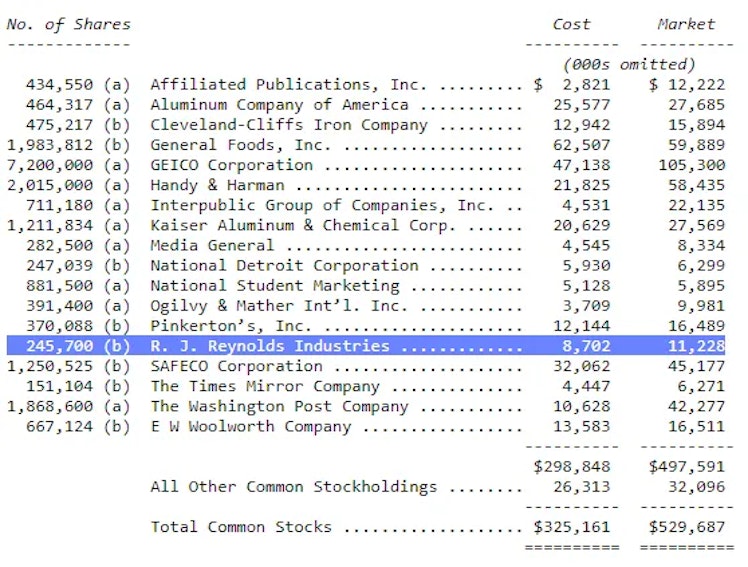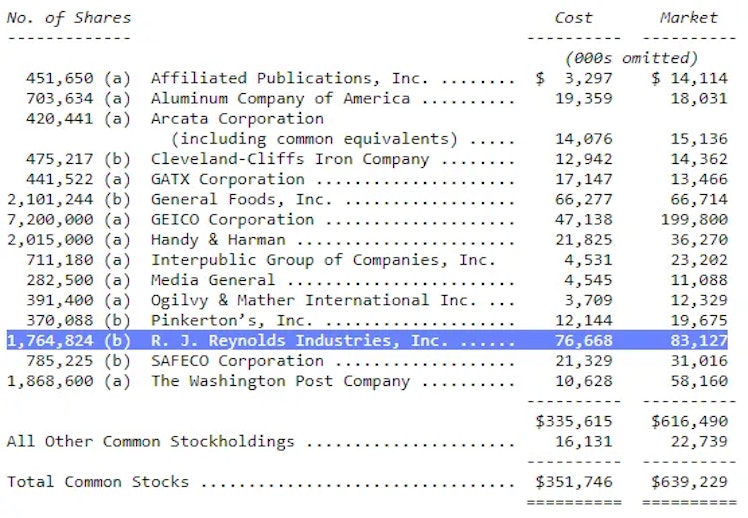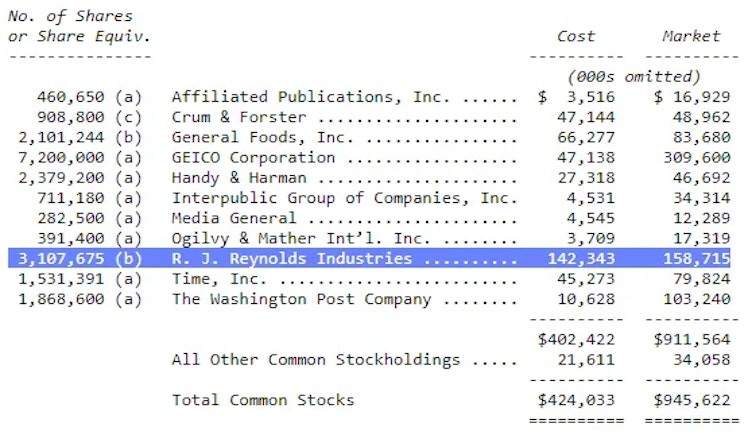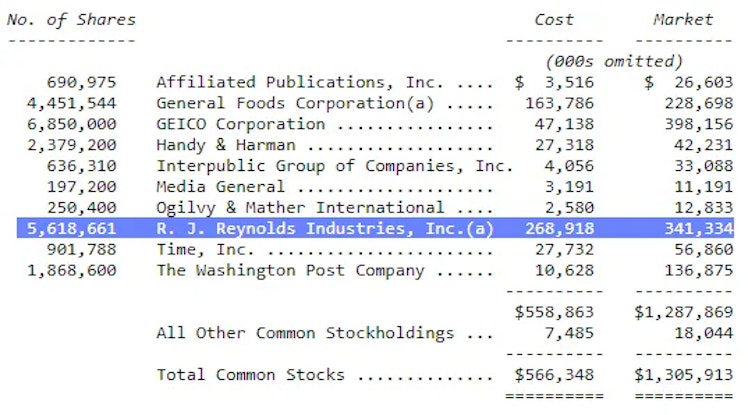Trending Assets
Top investors this month
Trending Assets
Top investors this month
The Real Story of Buffett, Berkshire, and Tobacco
“I’ll tell you why I like the cigarette business. It cost a penny to make. Sell it for a dollar. It’s addictive. And there’s a fantastic brand loyalty.” - Warren Buffett
At first glance, Warren Buffett’s track record regarding tobacco appears somewhat incongruent. On one hand, he has praised the unit economics of tobacco, while on the other, appeared to publicly shun the industry as an investment. Yet, his track record includes a handful of tobacco-related investments. Not only that, but Berkshire Hathaway actually owns a direct economic interest in the tobacco supply chain.
Let’s dust off the filings and archives and look at what the Oracle of Omaha has been up to.
R. J. Renolds Equity - 1980
Inflation in the U.S. had peaked at 14.8% in March 1980. While the Chairman of the Federal Reserve, Paul Volcker, aggressively raised the federal funds rate, many market participants remained cautious - including Warren Buffett. Beginning in 1980, Berkshire Hathaway began to accumulate shares of R. J. Reynolds (now part of BAT), which can easily be found in Warren’s Letters to Berkshire Shareholders:
1980

1981

1982

1983

Buffett would go on to sell the RJR stake, recognizing a ~27% gain on the shares, excluding dividends received over the several years of ownership. Then, in 1985, Berkshire more than x3’d its investment in General Foods Corporation when it was purchased by tobacco giant Philip Morris.
Bayuk - 1982
On December 21, 1981, Bayuk Cigar shareholders approved a plan to completely liquidate the company within one year, including the planned sale of its cigar business assets to Swisher (then a subsidiary of American Maize). The very next day the federal government filed against the sale, stating that it would substantially lessen competition in the manufacture and sale of cigars, a clear violation of the Clayton Antitrust Act of 1914, as highlighted in the archived competitive impact statement.

In March 1982, to avoid the wrath of the government while still proceeding with the liquidation plan, Bayuk instead sold its Garcia y Vega cigar brand and related assets to Culbro Corp (General Cigar). That same month, Buffett began buying shares of Bayuk, which had sold off following the government’s initial opposition, ultimately building a 5.7% stake by the end of April. In September of that year, American Maize sued Bayuk for breaching their original agreement and sought over $6 million for fees, expenses, and punitive and nonspecific damages. Despite the legal overhang, Bayuk sold its remaining operations and assets and made a series of distributions over the next 4 years, with the liquidation netting Buffett and Berkshire shareholders a >x2.5 return on the initial investment.
RJR Nabisco Bonds - 1989
In 1985, R. J. Reynolds acquired Nabisco for $4.9 billion, forming RJR Nabisco. Three years later, KKR engaged in the infamous leveraged buyout. Despite high cash conversion and low capital intensity, RJR Nabisco was saddled with enormous debt, and in 1989, the company’s bonds were trading at deeply depressed levels, which Buffett happily began to accumulate. Within a year, Buffett had deployed $440 million to acquire bonds yielding 14.4%, and....
Finish reading at the link below:
invariant.substack.com
The Real Story of Buffett, Berkshire, and Tobacco
The lesser-known history of BRK's tobacco investments and the moral line drawn by Warren Buffett and Charlie Munger.
Already have an account?